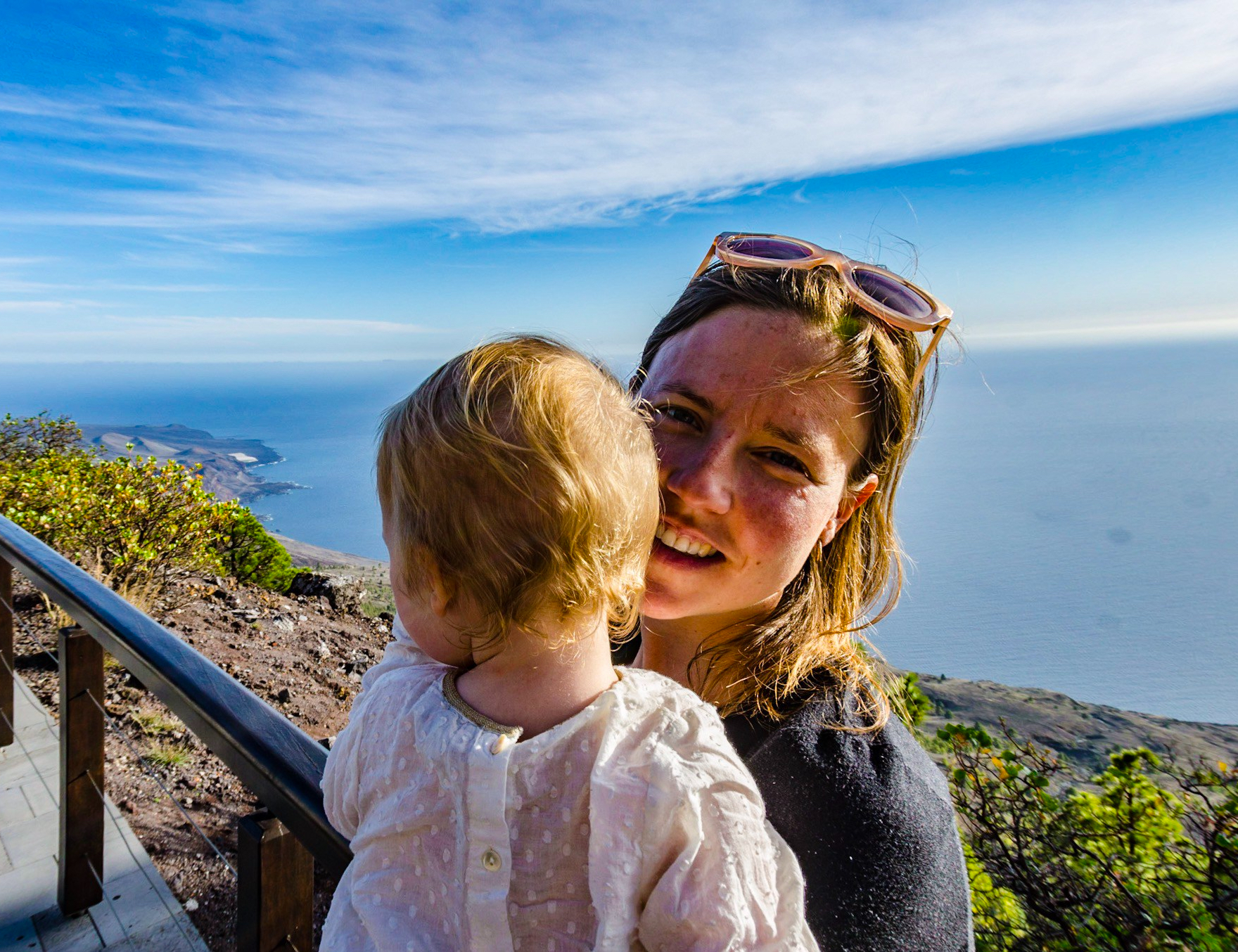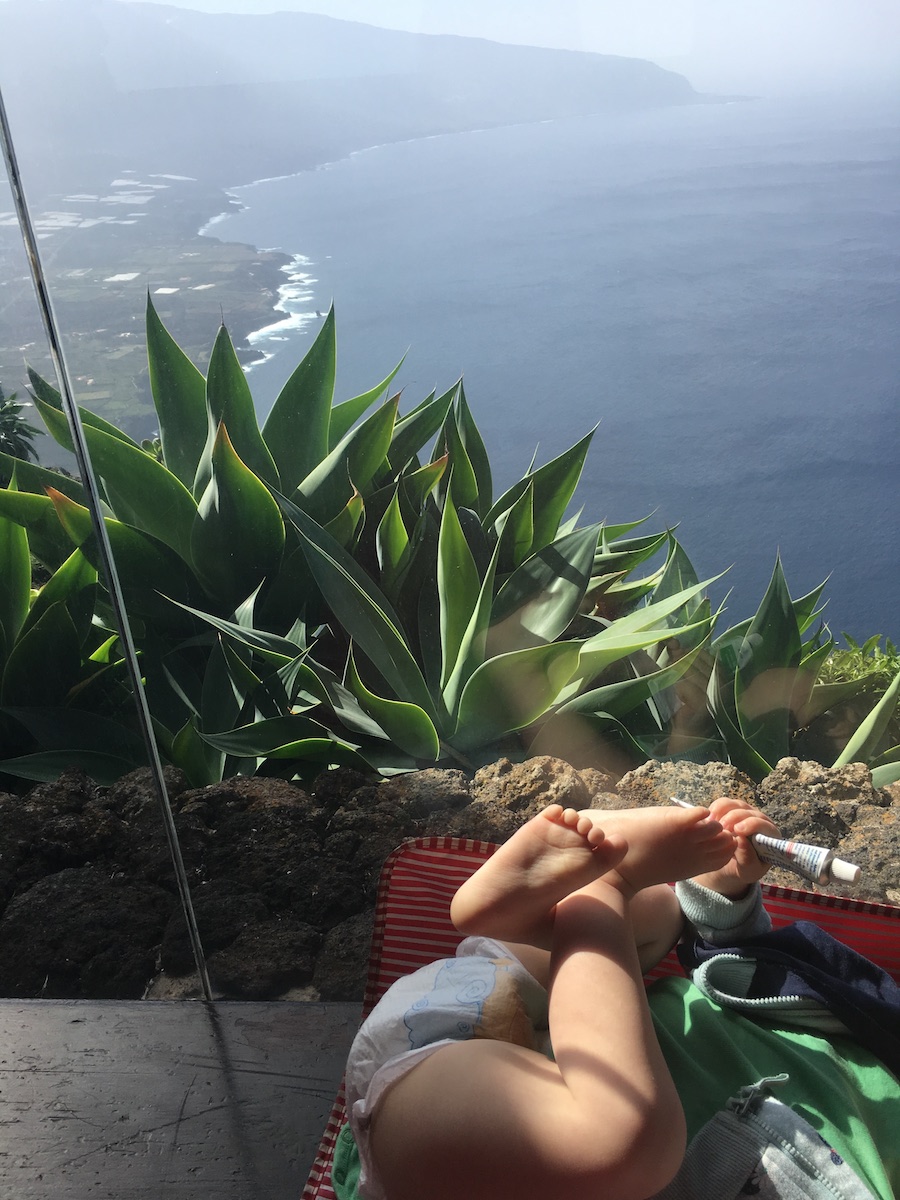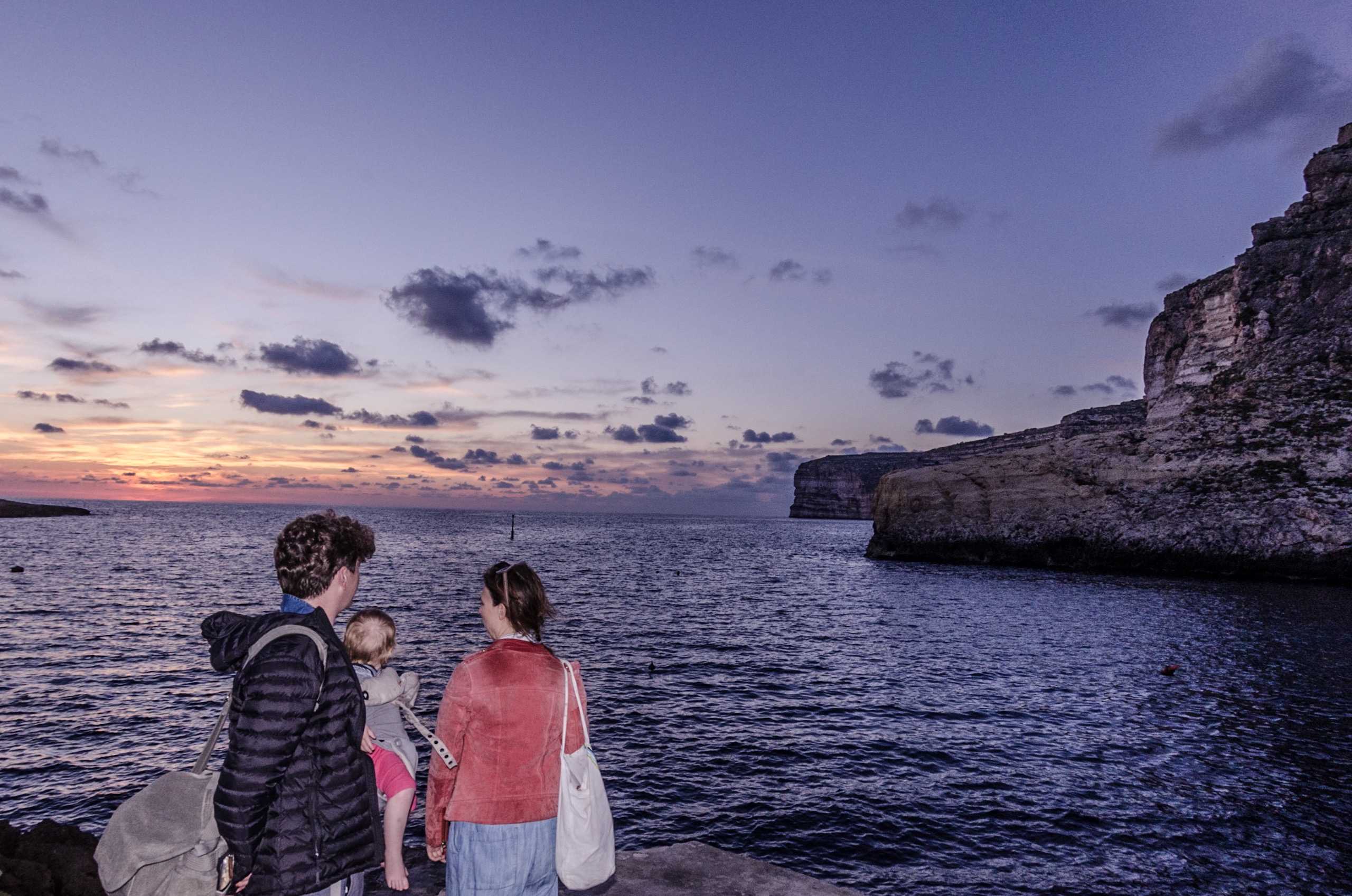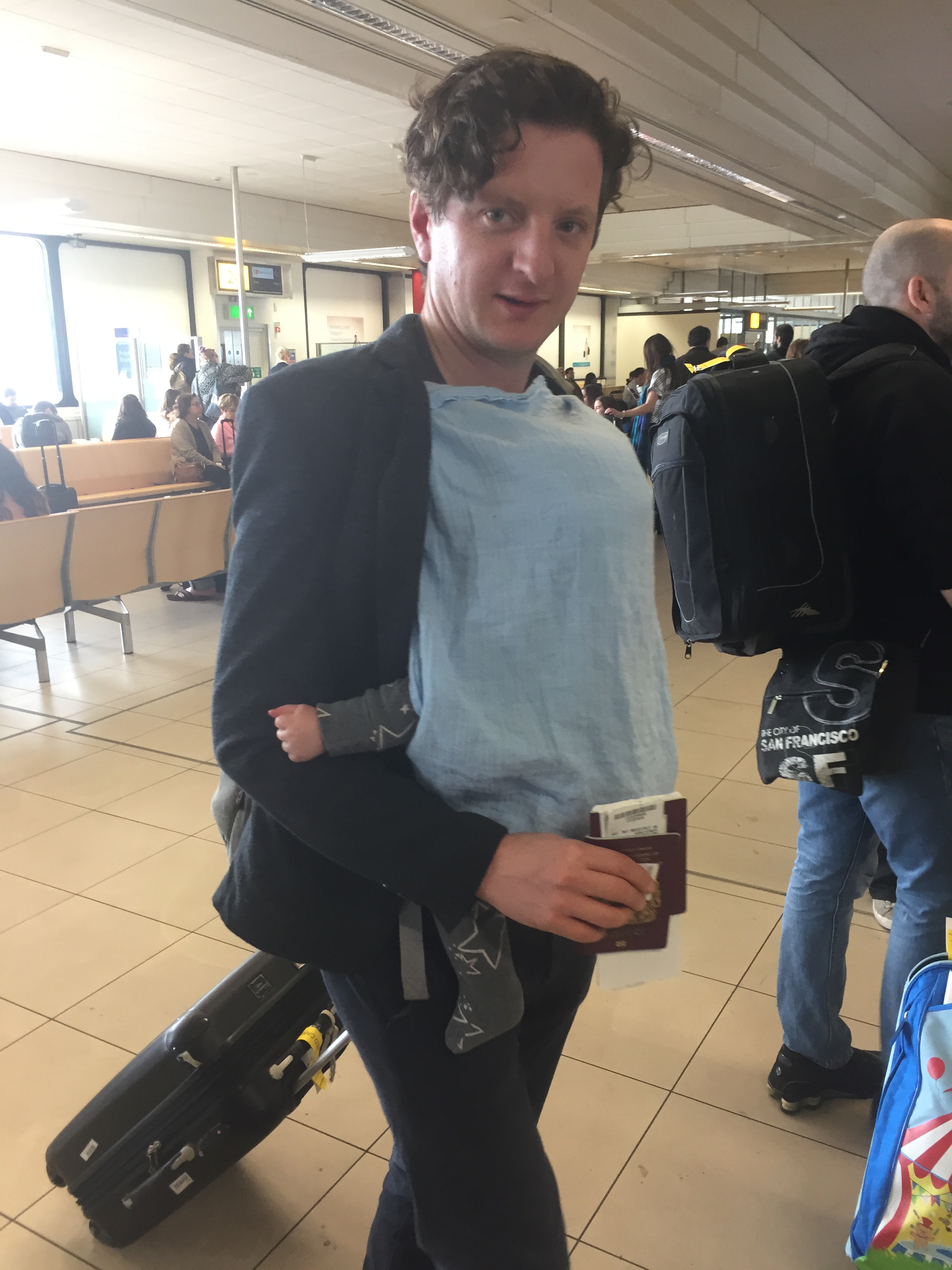We took the baby girl with us to El Hierro, the smallest and most remote of the Canary Islands in January 2018. We were there for nearly three weeks, staying in a tiny village called La Restinga at the southernmost point of the island and splitting our time between diving (I was researching an article for Diver Magazine), exploring El Hierro and tag-teaming looking after the baby girl so we could both keep up with work while we were away.
It was a fantastic trip and I hope this post encourages you to visit El Hierro too. You might not have heard of it – I hadn’t – but it’s an extremely beautiful and peaceful place to spend some time. If you’ve ever been to El Hierro, please add your own tips in the comments.

Getting there
You can fly to El Hierro from Gran Canaria and Tenerife North with local airline Binter in around 40 minutes (most flights from the UK arrive at Tenerife South Airport so you’ll need to leave plenty of time for the transfer). Or there’s a ferry from Los Cristianos in Tenerife to Valverde on El Hierro (the port is a 15-minute drive from Tenerife South airport), operated by Navaria Armas. The crossing takes around two and a half hours and can be pretty choppy so remember to bring medication if you suffer from sea sickness. The chief benefit of the ferry is that you can take as much luggage as you want, while there’s a very stingy allowance on the tiny planes that operate on the inter-island flights. There’s a luggage pick up and drop up service for foot passengers on the ferry.
If you’re taking the ferry from Tenerife, hiring a car at the airport when you arrive is more convenient than waiting until you arrive in El Hierro (though there is a car hire company at the port in Valverde). There’s car hire at the airport in Valverde too, and in the centre of town. Car hire firms on El Hierro and Tenerife can supply child car seats but make sure you book in advance as numbers are limited. To feel completely secure, either bring your own from home or hire one from Hire4Baby Tenerife and they’ll have it waiting for you at the airport in Tenerife when you arrive (they also have pushchairs, cots and high chairs).
There is a taxi rank at the airport in Valverde or you can book an official El Hierro taxi in advance. They can’t provide child car seats so you’ll need to bring your own. Local buses run from Valverde port (numbers 7 and 11) and airport (number 10) to Valverde town every couple of hours, where you can transfer to other routes to reach your final destination.
El Hierro is small, so your transfer from the ferry port or airport will be under an hour, unless you’re doing it by bus, which takes longer because you have to change in Valverde town.
Getting about
While buses on El Hierro are inexpensive, clean and very punctual, there aren’t very many of them – most routes run 7am to 10pm on weekdays (earlier at weekends), with departures taking place only every couple of hours.
Hiring a car is a much more convenient way of getting around and works out relatively inexpensively. Not to mention the fact that there are some truly spectacular drives on El Hierro that you’d miss out on without your own vehicle. The roads are in excellent condition, so no worries on that front, but bear in mind that the island has only three petrol stations, so you need to plan ahead to avoid getting caught out.
Pavements are generally in good condition so walking with a pushchair is no problem in villages and towns all over the island. That said, almost everywhere is very hilly so be prepared for a workout. With the exception of Valverde and Frontera, the island’s biggest towns, there’s very little traffic on El Hierro – the baby girl wasn’t walking yet when we were there but I wouldn’t hesitate to let her toddle along on the pavement if we were to go back.
Eating out

The staff in every restaurant and café we went to were very happy to accommodate the baby girl, whether by providing a high chair or letting us park her out of the way when she was sleeping in the pushchair in the evening. None had baby change facilities.
Essentials
The supermarkets on El Hierro are all small and quite expensive, which isn’t surprising given that almost everything is brought in by boat from the mainland via Tenerife. That said, we were able to find a wide range of nappies and baby wipes in most supermarkets we visited. Supermarkets close for a few hours at lunchtime and are closed on Sunday afternoons.
Emergencies
The phone number for emergency services is 112 in the Canary Islands and there’s an accident and emergency department at Hospital Insular Ntra. Sra. de Los Reyes in Valverde. A European Health Insurance Card (this post tells you how to apply for one for yor child) will cover you for emergency treatment or treatment for existing conditions. More information on healthcare in the Canaries on the NHS’s website.
Things to do

El Hierro has a handful of sandy beaches, including at Arenas Blancas, El Verodal, Las Playas, Tamaduste and La Restinga (the latter two are very little), but you won’t find much in the way of amenities. Some have an outdoor shower and public toilet, but that’s usually about it.
Much more common on the island are sea water swimming pools carved into the volcanic shoreline and accessed by the sort of ladders you find at actual swimming pools. While less convenient for families with small children than a sandy beach, these areas boast open access barbecues, shady picnic tables, showers and toilets, and usually a bar or restaurant (some of which are only open in high season).
When it comes to non-seaside pursuits, we found small playgrounds in La Restinga, Valverde, at the Pozo de La Salud spa hotel in Sabinosa (the restaurant is open to non-residents) and at the Hoya del Morcillo recreation area in the forested centre of the island. There’s lots of fantastic hiking on El Hierro, so you’ll want to bring a sling or backpack carrier. The visitor centre at El Julán, which is dedicated to the ancient people of the island and has the most incredible views, has an area of floor cushions that looks inviting for toddlers, while the Centro de Interpretación Vulcanológico outside La Restinga is immersive enough to be entertaining for little ones while the grown-ups learn about volcanic activity on the island.
Local village festivals, such as El Pinar’s celebration of its patron saint San Antonio Abad in January are exciting for small children, and families with babies and children of all ages come together to watch the local sports obsession, Canary Islands wrestling. Matches take place in the evening. It’s hard to find information about this sort of community event online so remember to ask in the local tourist office (only two offices are listed here but there are more than that on the island, I promise) if there are any festivals or wrestling matches taking place during your stay.





